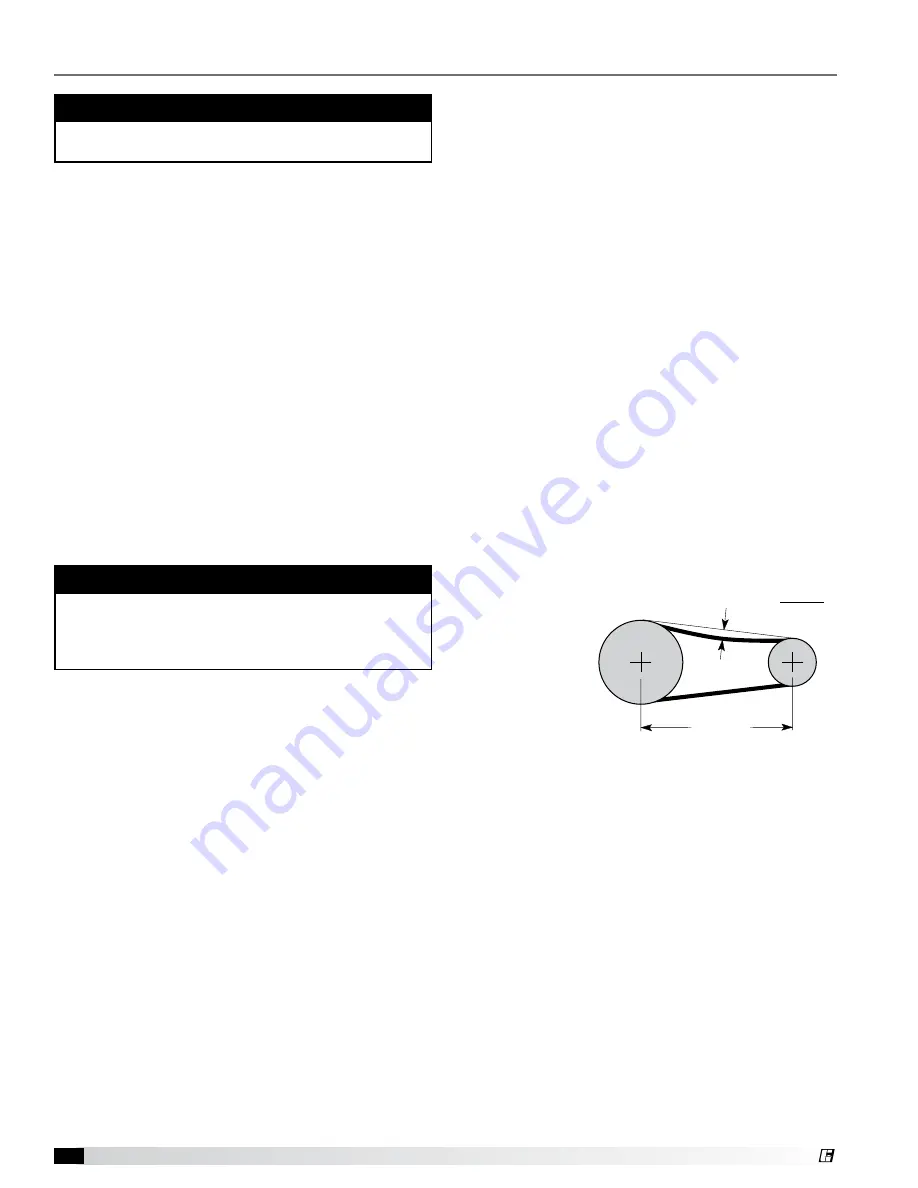
FumeJet
®
Fume Exhaust Fans
10
®
Belt Drive Maintenance
V-belt drives must be checked on a regular basis
for wear, tension, alignment and dirt accumulation.
Premature or frequent belt failures can be caused by
improper belt tension (either too loose or too tight)
or misaligned sheaves. Abnormally high belt tension
or drive misalignment will cause excessive bearing
loads and may result in failure of the fan and/or motor
bearings. Conversely, loose belts will cause squealing
on start-up, excessive belt flutter, slippage and
overheated sheaves. Either excessively loose or tight
belts may cause fan vibration.
When replacing V-belts on multiple groove drives all
belts should be changed to provide uniform drive
loading. Use a set of matched belts whenever possible.
Do not pry belts on or off the sheave. Loosen belt
tension until belts can be removed by simply lifting the
belts off the sheaves. After replacing belts, ensure that
slack in each belt is on the same side of the drive. Belt
dressing should never be used.
Do not install new belts on worn sheaves. If the sheaves
have grooves worn in them, they must be replaced
before new belts are installed.
The proper tension for operating a V-belt drive is
the lowest tension at which the belts will not slip at
peak load conditions. Belts are adjusted by raising or
lowering the motor
pivot plate. For
initial tensioning,
the proper
belt deflection
halfway between
sheave centers is
1/64-inch for each
inch of belt span.
Check belt tension two times during the first
24 hours of operation and periodically thereafter.
Belt Span
Deflection = Belt Span
64
Once the unit has been put into operation, a routine
maintenance schedule should be set up to accomplish
the following:
1. Lubrication of bearings and motor.
2. Wheel, housing, bolts and set screws on the entire
fan should be checked for tightness.
3. Any dirt accumulation on the wheel or in the housing
should be removed to prevent unbalance and
possible damage.
4. Inspect fan impeller and housing looking for fatigue,
corrosion, or wear.
Fan Operation
All fans should be run every thirty (30) days, or at least
“bumped” every thirty days. It is preferred that each
fan is run as this causes all electrical and mechanical
components to get up to temperature, displacing any
formed condensation, redistributes load on bearings,
and redistributes grease in the bearings (motor and
shaft bearings).
IMPORTANT
When operating conditions of the fan are to be
changed (speed, pressure, temperature, etc.), consult
manufacturer to determine if the unit can operate
safely at the new condition.
Motors
Motor maintenance is generally limited to cleaning
and lubrication. Cleaning should be limited to exterior
surfaces only. Removing dust and grease buildup on
the motor housing assists proper motor cooling. Never
wash-down motor with high pressure spray.
Greasing of motors is only intended when fittings are
provided. Many fractional motors are permanently
lubricated for life and require no further lubrication.
Motors supplied with grease fittings should be
greased in accordance with the manufacturer’s
recommendations. When motor temperature does not
exceed 104ºF
(40ºC)
, the grease should be replaced
after 2000 hours of running time.
Routine Maintenance and Operation
WARNING
Before taking any corrective action, make certain unit
is not capable of operation during repairs.


































